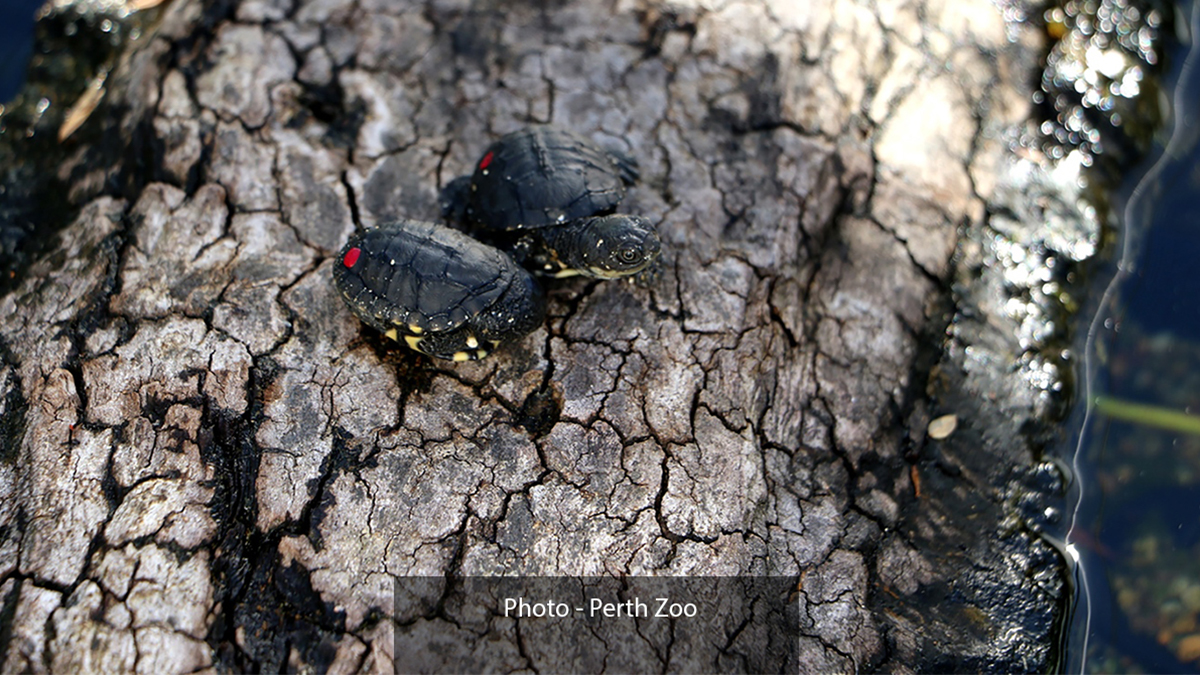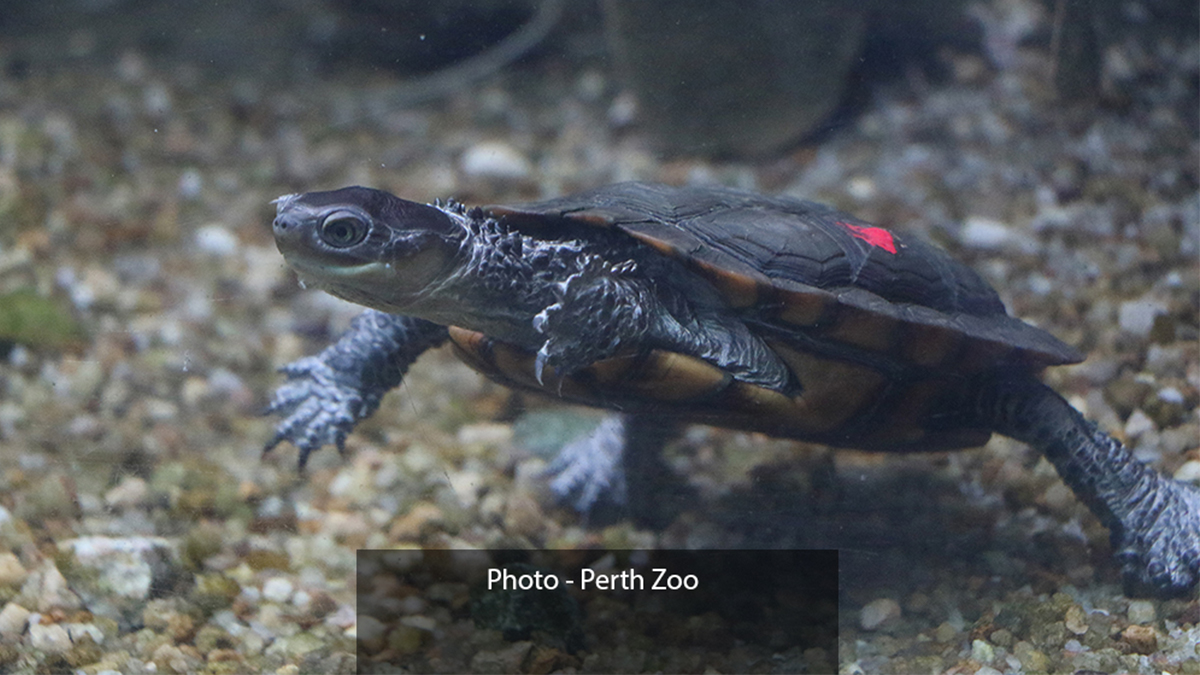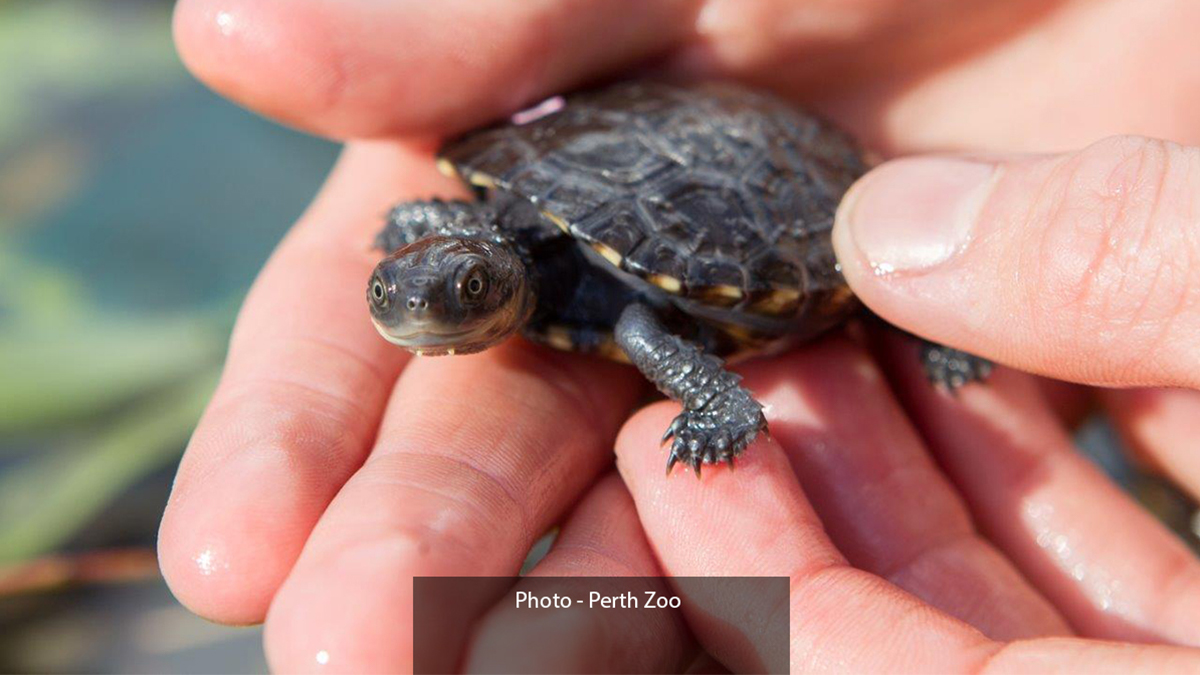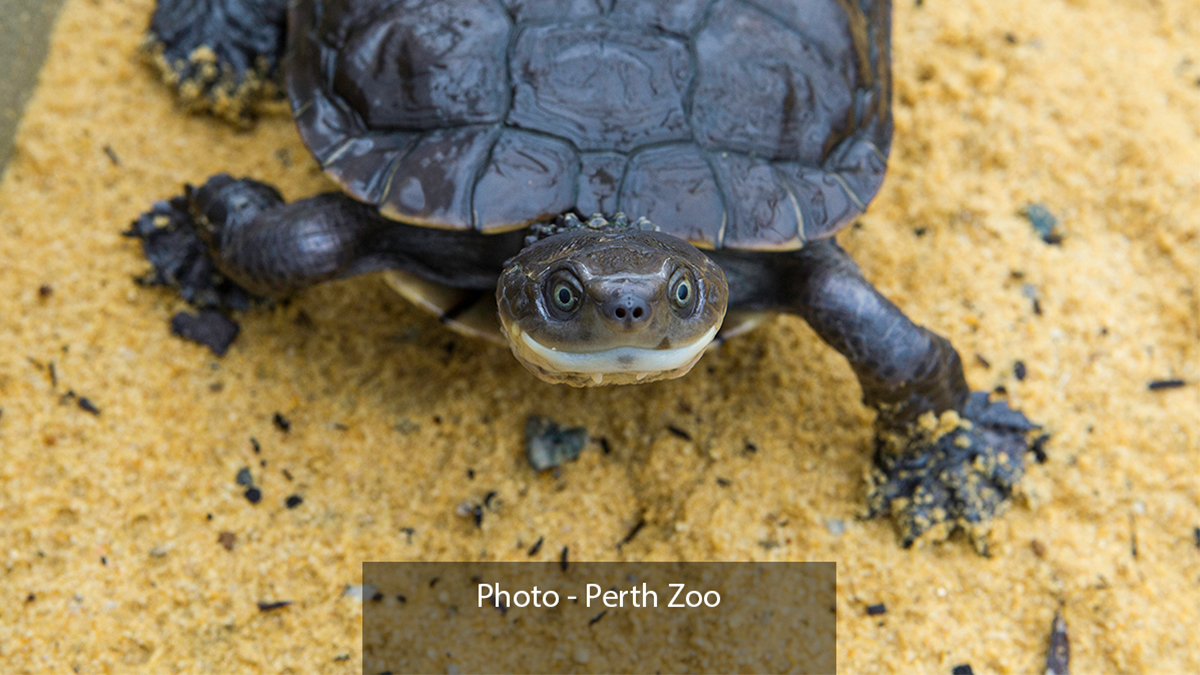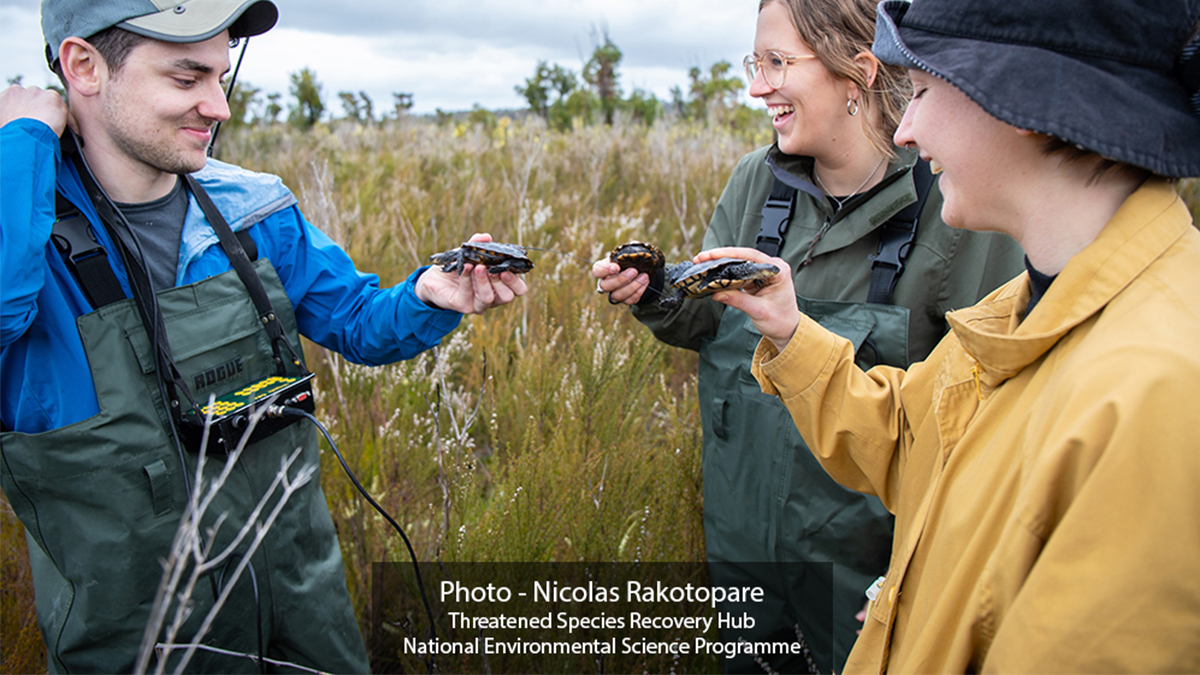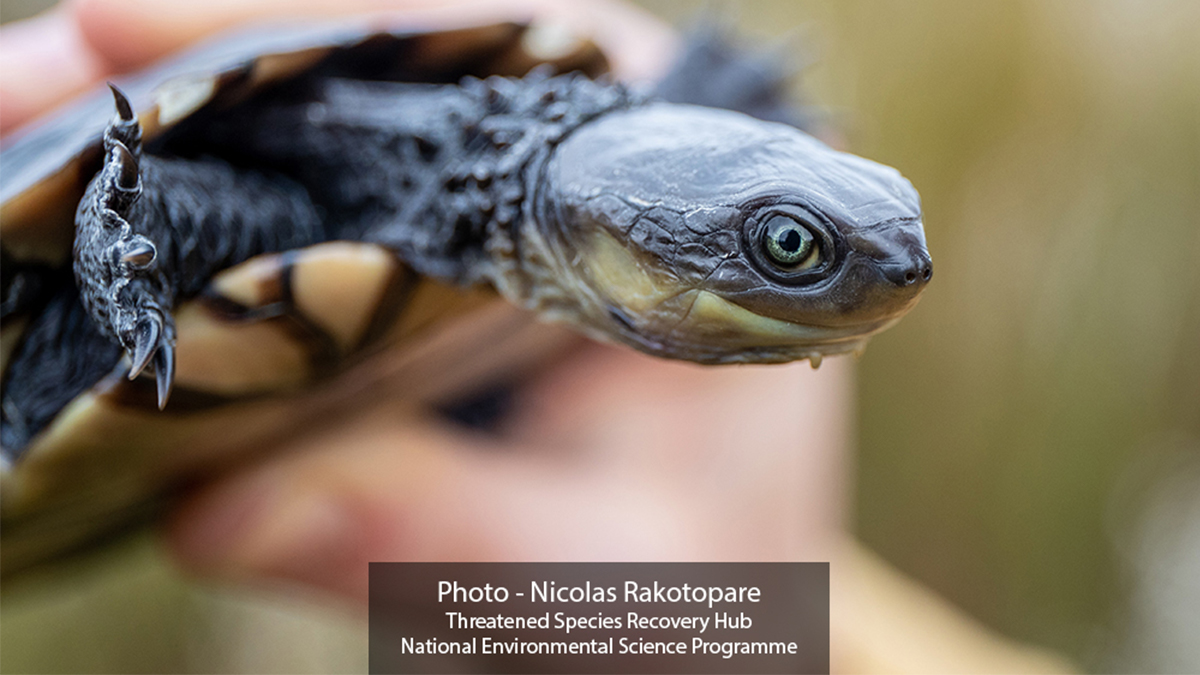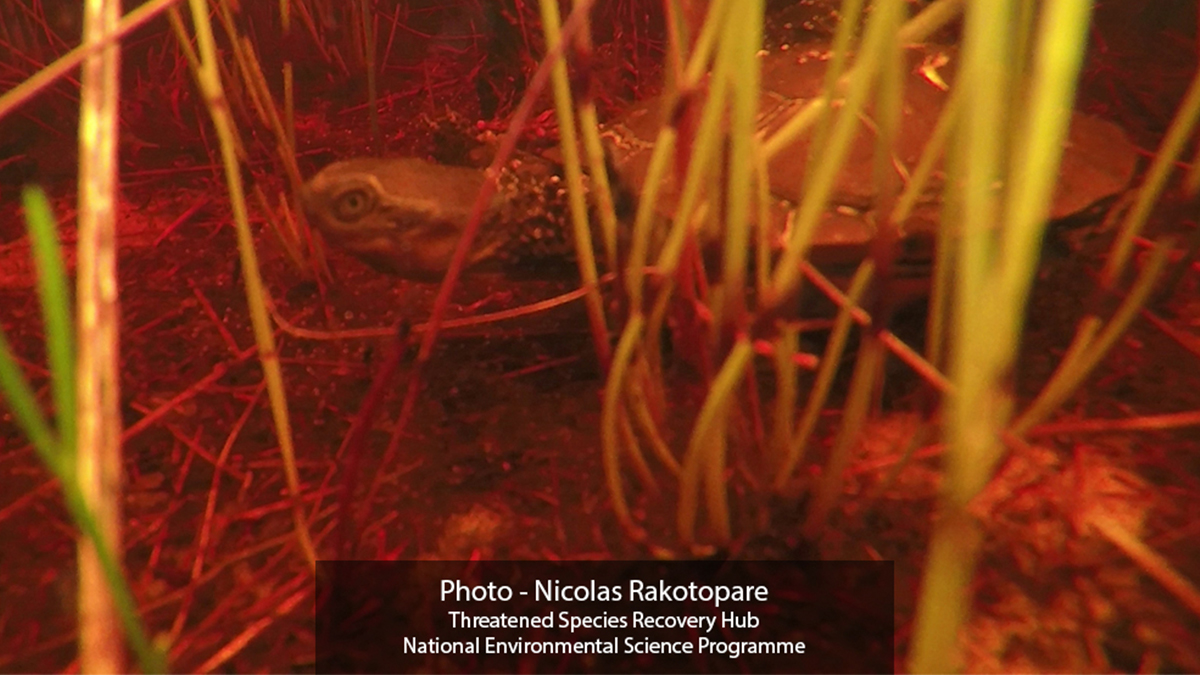Western swamp tortoise - Pseudemydura umbrina
This page was created in partnership with the Perth Zoo and the Threatened Species Recovery Hub of the National Environmental Science Programme.
Identification
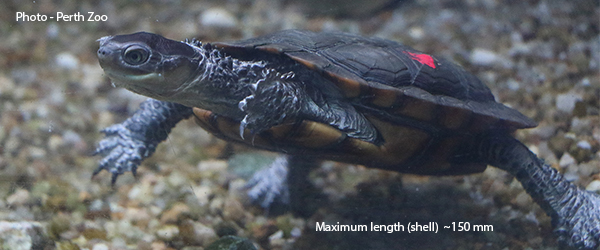
The Western swamp tortoise (Pseudemydura umbrina) is a small, short-necked turtle. It has a brown squarish shell of up to 15 cm in length, with females being smaller than males.
It has webbed toes with five claws on each foot. It is the only species of turtle or tortoise known to digs its nest chamber with its front legs (all other species dig with their hind legs). It is also the smallest species belonging to the Australian family 'Chelidae' (semi-aquatic turtles), and Australia’s rarest reptile
Carapace (Shell) Length: maximum 15.5cm (males), 13.5cm (females), 2.4-2.9cm (hatchlings)
Weight: maximum 550g (males), 410g (females), 3.2-6.6g (hatchlings)
Distribution
Restricted to two small remnant populations, just north of Perth.
The remaining populations are within nature reserves managed by the Department Biodiversity Conservation and Attractions. These are managed to maintain sufficient habitat, water quality, fire protection, and predator control.
This species naturally had a very restricted range, in ephemeral wetlands on the clay soils of the Swan Coastal Plain. Much of this habitat has been converted to agricultural or urban land, and increasing aridity has also lead to the permanent drying of much of this habitat type. Additionally, the introduced red fox has impacted populations and predates on both the turtles and their eggs.
Habitat
Require a very specific habitat type of shallow ephemeral wetlands on the clay soils of the Swan Coastal Plain, and are not know to occur in permanent waterbodies.
Research has identified several specific requirements, such as soil temperatures less than 34°C for egg survival, and water temperatures needing to stay be between 14°C and 30°C (DPAW Fauna profile 2017).
Biology
They are a long lived species, only reaching sexual maturity at an average of around 10-15 years of age. They have a slow rate of recruitment with females producing only one clutch per year of 3 – 6 eggs. This is in contrast to the Cheolodina colliei (western long neck turtle) that produces three clutches of 8-16 eggs per year.
Diet consists of small live prey such as macroinvertebrates, small fish, and frogs. They are strict carnivores of live food only (no carrion or vegetable matter).
Conservation status
Threatened species: Listed as critically endangered under the Biodiversity Conservation Act 2016 (state, Western Australia), the Environment Protection and Biodiversity Conservation Act 1999 (Commonwealth) and the ICUN Redlist of Threatened Species 2020 (International).
It is the most endangered turtle in the world, with only around 50 adults left in the wild.
Under the BC Act, Threatened species are listed in the category of critically endangered, endangered or vulnerable. Critically endangered species are considered to be “facing a very high risk of extinction in the wild in the immediate future, as determined in accordance with criteria set out in the ministerial guidelines.
Management
The remaining populations are within nature reserves managed by the Department Biodiversity Conservation and Attractions. These are managed to maintain sufficient habitat, water quality, fire protection, and predator control.
The species recovery plan can be found at:
http://www.environment.gov.au/resource/western-swamp-tortoise-pseudemydura-umbrina-recovery-plan-0
